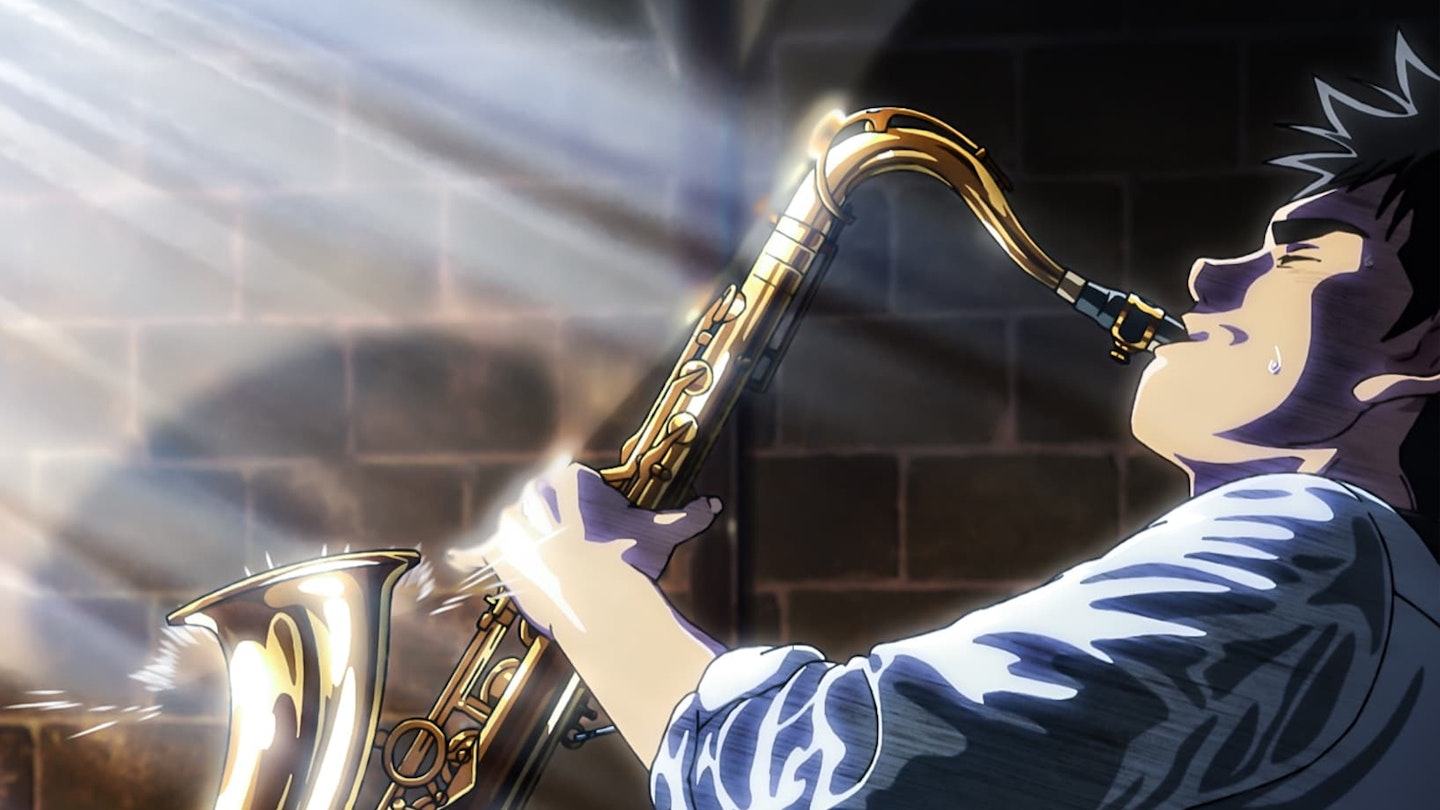For almost every moment of transcendental beauty in Blue Giant, where music and animation work in breathtaking concert with each other, there’s another moment that feels completely out of tune. Directed by Yuzuru Tachikawa (known for the excellent anime series Mob Psycho 100), the film is set in the embers of Tokyo’s dying jazz scene, following a trio of young musicians. Chief among them is the saxophonist Dai Miyamoto (Yuki Yamada), newly moved to Tokyo in pursuit of his dream. After he meets Yukinori Sawabe (Shôtarô Mamiya), a jazz piano player who laments the growing obscurity of the genre, they form a band, and try to figure out how to hit the big time.

They’re a charming group, and the big musical sequences that stem from their partnership are spectacularly staged— you can see the great ideas housed within each scene, even at their most awkward-looking. The character work is consistently engaging, particularly in seeing the arc of novice Shinji (Amane Okayama) relishing a newfound love of drumming, even as he struggles to keep up with his gifted bandmates.
Blue Giant’s use of 3D feels like a limitation.
The imperfections of the animation itself are, sadly, glaring to the point of distraction. Unlike Belle (where 3D animation is used to divide the real world from the virtual), or last year’s The First Slam Dunk (which used 2D and 3D to distinguish regular life from basketball life), Blue Giant’s use of 3D feels like a limitation, rather than expanding the film’s visual language.
Still, there are also incredibly beautiful and tactile moments of hand-drawn expression, as the imagery melts away into pure sensation. One jaw-dropping example comes when Yukinori hits a key and it compresses like jelly, the rest of the instrument warping and stretching out into an infinite space. A jazz festival performance at the film’s midpoint, meanwhile, is a perfect encapsulation of both Blue Giant’s giddy highs and deflating lows, mixing incredibly awkward 3D with dazzling, sensory 2D animation, turning the band’s performance into waves of psychedelic colour.
In such moments — thanks in no small part to jazz pianist Hiromi Uehara’s energetic score — it feels plausible that twentysomethings could play jazz awesome enough to turn the entire screen into a black hole. It’s a shame that the film has bum notes of its own, but even with its uneven visual edges, Blue Giant’s audacious musical sequences still shine bright.
